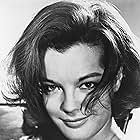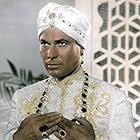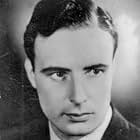Sissi - Die junge Kaiserin
- 1956
- 1h 47m
The second in a trilogy of movies about Elisabeth "Sissi" of Austria, the film chronicles the married life of the young empress as she tries to adjust to formal and strict life in the palace... Read allThe second in a trilogy of movies about Elisabeth "Sissi" of Austria, the film chronicles the married life of the young empress as she tries to adjust to formal and strict life in the palace and an overbearing mother-in-law.The second in a trilogy of movies about Elisabeth "Sissi" of Austria, the film chronicles the married life of the young empress as she tries to adjust to formal and strict life in the palace and an overbearing mother-in-law.
- Awards
- 3 nominations
- Director
- Writer
- All cast & crew
- Production, box office & more at IMDbPro
Storyline
Did you know
- TriviaIn real life, the coronation of Joseph and Elisabeth (Sissi) took place in the Castle of Buda in 1867. However, they couldn't shoot the scene in Buda when this movie was made because the castle was seriously damaged during WWII. Furthermore, there was a revolution in Hungary against the Soviet regime in 1956. This made it impossible to shoot the scene at its original location.
- GoofsDuring the ball scene with the Hungarians the "Emperor Waltz" by Johann Strauß Jr. is played. This waltz was released in 1889. The scene however takes place in 1854/5.
- Quotes
Count Andrassy: Since the time of Maria Theresa the Hungarian nation has waited from generation to generation for a human being in this Imperial House. Someone to trust, someone worth living for, and someone worth dying for. We didn't come to see the Emperor of Austria today, but to see our future Queen!
- ConnectionsEdited into Forever My Love (1962)
- SoundtracksEmperor Waltz
Music by Johann Strauss
Germans (particularly young Germans) were in a constant state of denial in the fifties and sixties. As late as the seventies I taught groups of West German students who would were not even willing to express an opinion about the possible future reunification of a still divided Germany and of course steered well away from any discussion of the unfortunate events of 1933-1945 - the "you know what" of the German world.
Austria, spared by a sort of political conjuring trick from all implication in German nastiness, served as a wonderful alibi for the pan-German world and was the natural setting for a sumptuous epic (a film of the kind that Germany itself now avoided making).
Romy Schneider and Karlheinz Böhm were the ideal representatives of the new generation, expressive at once of continuity and reborn innocence. Both had parents who were in fact closely implicated in the period no one talked about. Magda Schneider, who appears of course as her daughter's mother in the films, had been a neighbour and close friend of Hitler (she still lived in Bechtesgarten) and had also been, according to herself at any rate, his favourite actress. The conductor Karl Böhm had belonged to a quasi-Nazi cultural organisation (formed by the very racist Alfred Rosenberg)and had publicly and ostentatiously welcomed the annexation of his native Austria in 1938. Romy and Karlheinz of course had both been at boarding-school and were innocent of any such associations.
The average German did not so much want a break with the past but to establish a line of continuity that made the past somehow OK (even the "you know what"). It might be mildly critical of those nasty Nazis (as in the highly popular film Die Trapp-Familie, which came out in the same year as this second Sissi film, but were not prepared, understandably enough, to accept the burden of collective guilt for the past. Even The Sound of Music, the gooey Hollywood musical based on the German 1956 film, was felt by German audiences (despite the edelweiss) to be too strongly critical of the unmentionable past.
In the second Sissi film, there is the same pan-Germanic context as in the first (Bavarian beer and Bavaraian pigs' trottters, the Tyrol and edelweiss are not forgotten) but the historical events (the Hungarian unrest and Sissi's fondness for Hungary are accurate) allow an expansion of the pan-Germanic space, balm to the soul of a divided Germany, beyond the German-Austrian world portrayed in the first film to include Hungary, traditionally very strongly linked, culturally and politically, with the German world but in 1956 a Communist state under Russian tutelage. It is not too difficult to appreciate the importance of this in 1956, the year of the Hungarian rising against the Communist government and its suppression by Soviet troops. The link was widely commented upon in the contemporary press and 350 Hungarian refusgees weer invited to the film's première at the Mozart-Kino.
In 1954 Leni Riefenstahl's Tiefland was released in Germany, controversial because it had been made during the war and had made use of concentration-camp inmates as gypsy extras. Faced by a hostile press campaign, Riefenstahl ttok refuge in Austria. Her tour there was, in her own words, "a roaring success". In this film Mariscka hired gypsy extras for the crowd-scenes in Hungary, a fact frequently emphasised in the publicity for the film.
Today a reunited Germany sees itself once again as the centre of the culture of Mitteleuropa but, even in the days when such things weer not spoken of, that cultural imperium remained close to the heart of most Germans. As Germany increasingly flexes its muscles and begins to talk incessantly once again of rearmament, let us hope that the future of that Central European imperium proves closer to the fairy-tale world of this trilogy, where even the reactionary autocrat Franz Josef is displayed as a benevolent liberal, than to the darker reality of the "you know what".
- How long is Sissi: The Young Empress?Powered by Alexa
Details
- Release date
- Country of origin
- Languages
- Also known as
- Sissi: The Young Empress
- Filming locations
- St. Michael's Church, Vienna, Austria(as Crownings church interiors)
- Production company
- See more company credits at IMDbPro
- Runtime1 hour 47 minutes
- Color
- Aspect ratio
- 1.37 : 1
Contribute to this page

































